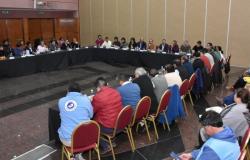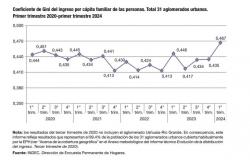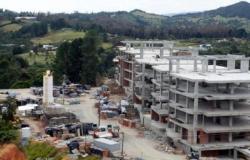1:40
The long-awaited 10,000 peso bills, officially in circulation since May 7, are already being delivered on a large scale to banks and are becoming increasingly present in the population’s daily payments.
These papers, which pay tribute to María Remedios del Valle and Manuel Belgrano, are five times the value of those that were previously the greatest.
Therefore, it is now key for all consumers and merchants to learn as soon as possible to recognize if someone is trying to give them a fake copy.
To facilitate this task, the Central Bank of the Argentine Republic (BCRA) included in the design different elements that help to quickly verify its authenticity.
“The new $10,000 bill has strict security measures, incorporated through special printing systems,” said the BCRA during the launch.
These characteristics are, in fact, very similar to those used in the previous banknotes of the “Heroinas y Héroes de la Patria” family: the $2,000 with Carrillo and Grierson and the new $1,000 with San Martín.
Security measures are features that are included in banknotes because they are complex and expensive for counterfeiters to replicate. These are details that, therefore, do not usually appear in trout replicas.
Therefore, whenever a banknote is received, it is advisable to carry out a series of quick tactile and visual tests to ensure that all the signs of authenticity of the design are present.
 Security measures are features that are included in banknotes because they are complex and expensive for counterfeiters to replicate.
Security measures are features that are included in banknotes because they are complex and expensive for counterfeiters to replicate. A practical method to carry out this examination with the $10,000 bill is to follow five steps: touch the specimen, tilt it, look at it against the light, observe it closely and – if there are still doubts – under ultraviolet light, as will be explained in the remainder of this article. this note.
Step No. 1: touch the bill
As with dollars, the real bill has somewhat rough areas: so, if it is too soft or slippery, you should be wary. But also if it is perceived as excessively rough or rigid.
Specifically, on the front of the $10,000 bill, the first tip is to run your finger over certain parts that should have a perceptible relief, due to their intaglio printing. Mostly:
- The portraits of Del Valle and Belgrano.
- The largest number “10000”, half blue and half green.
- Green text that says “BANCO CENTRAL DE LA REPÚBLICA ARGENTINA”.
- The identification code for people with blindness that is on the vertical edges.
- The same relief should be perceived on the back of the bill, when touching the representation of the Flag Pledge.
Step #2: Tilt the bill
When you tilt a real $10,000 bill – back and forth, left and right – certain elements should move and change color. Which are?
-The sun-shaped motif. Located at the top right, its ink changes color from gold to green. In addition, a three-dimensional effect makes the element shine in different parts.
-The security thread. It appears exposed in three sections or “windows”, while in others it is covered by paper. The important thing is that when you tilt the bill, the red segments should glow and have a dynamic effect.
Step No. 3: look at the bill against the light
Then you have to raise the bill and observe it with light behind or below, whether solar or artificial. This will allow you to verify other very important security measures:
-The watermark. In the lightest part of the bill, against the light, the portraits of Del Valle and Belgrano should appear with the initials “MV” and “MB”.
-The reason for complementation. Next to the watermark, in the lower left corner, a vertical number “10000” that seems half painted finishes coloring when observing the bill in front of the light.
-The security thread. In the light, instead of being segmented, it appears as a continuous band that bears the initials “BCRA.”
-The latent image. In the lower right corner, on a blue motif, the initials “RA” should appear when the note is viewed in low light.
Step No. 4: look at the bill very closely
The real $10,000 bills, in turn, have words and numbers printed in microletters so small that they can only be distinguished with a magnifying glass or by putting your eyes very close to the paper (for those with very good eyesight).
 See alsoWho was María Remedios del Valle and why her image is on Argentina’s new $10,000 bills
See alsoWho was María Remedios del Valle and why her image is on Argentina’s new $10,000 bills If there is no clarity in these elements, it is most likely that the specimen is apocryphal.
What do the microletters say? They repeat many times “BCRA10000”.
Where to look for microletters?
-On the front of the ticket. On the lapel of Belgrano’s jacket and also on the lower edge of the blue motif that is lower right.
-On the back of the bill: in the representation of the Flag Oath, inside the mast and in parts of the horse’s saddle.
Step #5: Look under ultraviolet light
If there are still doubts, you can expose the specimen to ultraviolet light. In doing so, the unique number of the bill, which appears twice on the back, should have a noticeable variation.
-He verticalon the left edge and in red ink, acquires a red luminosity.
-He horizontalin the upper right corner and in black ink, is illuminated yellow.
For more details you can visit the official microsite of the $10,000 bill, at bcra.gob.ar.









